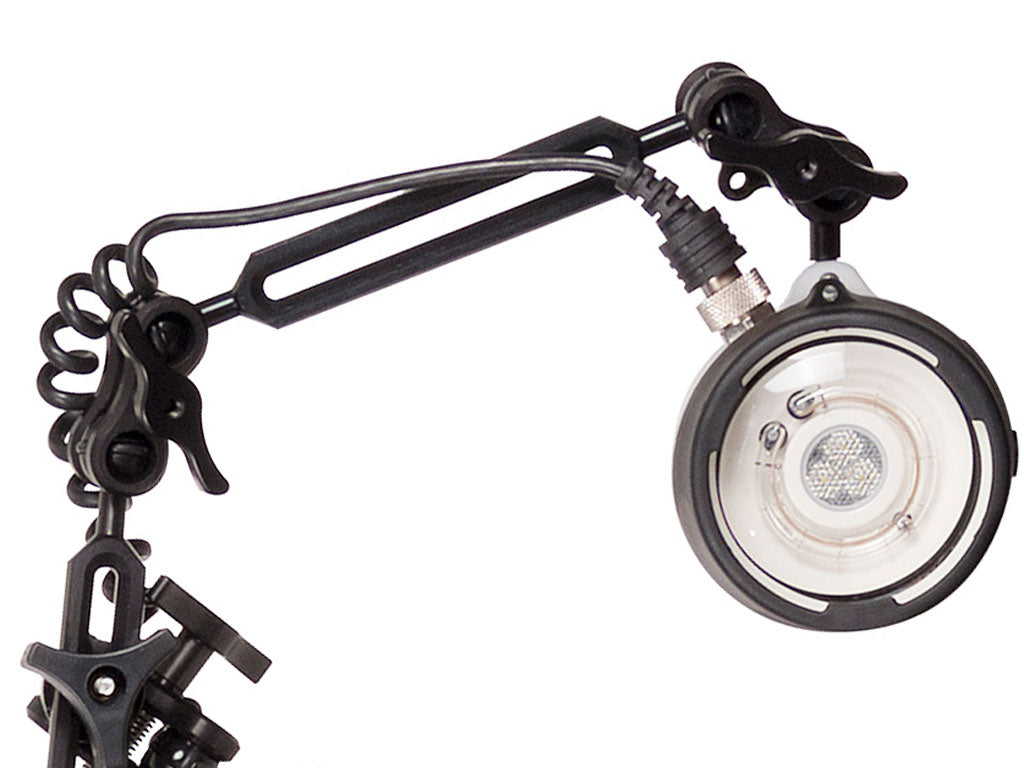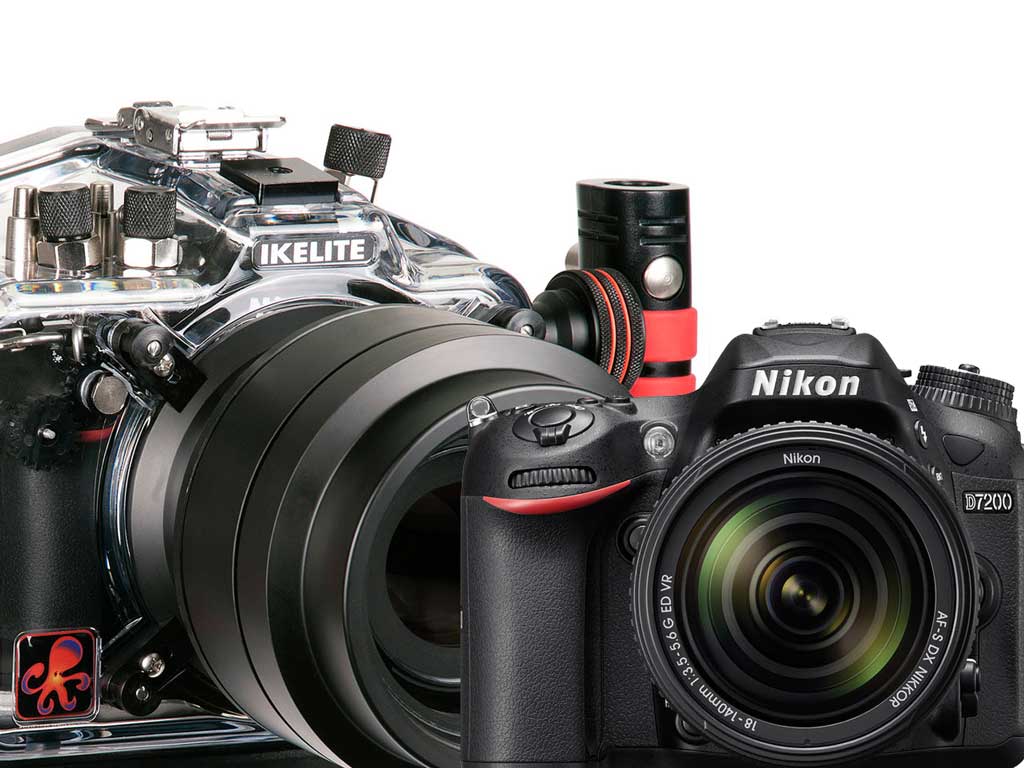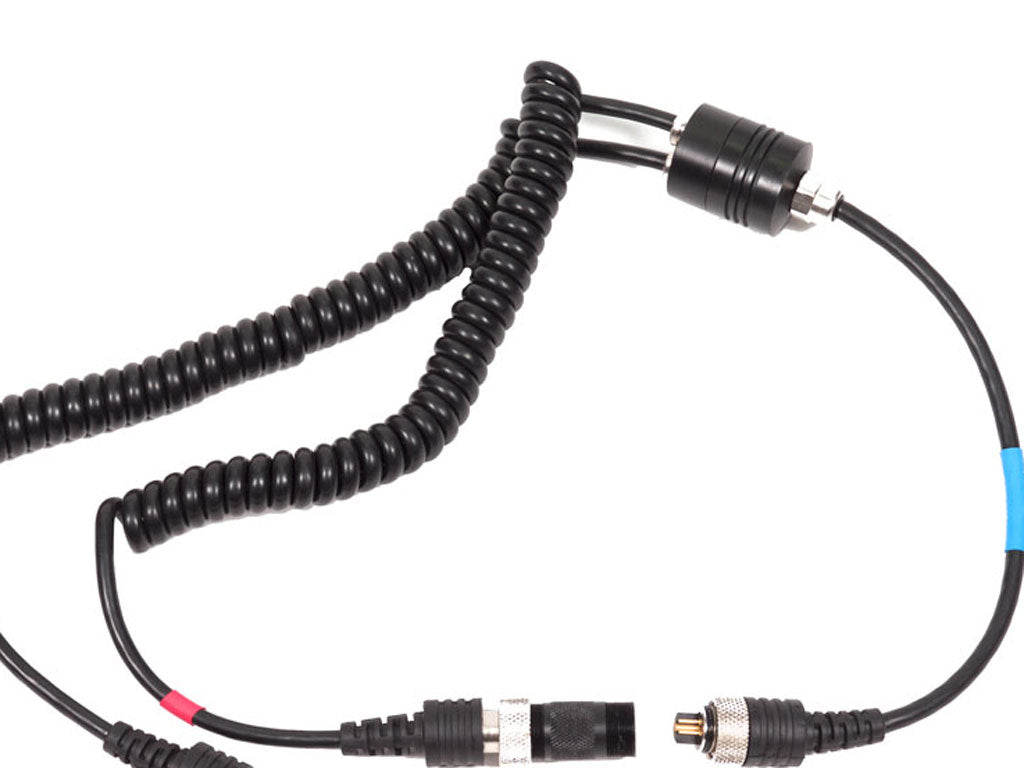Use the appropriate diagram below to help in testing and analysis of Ikelite sync cords and strobes. If a sync cord is attached to the strobe, for example, the diagram indicates which pins on the other end of the cord can be connected with a paper clip to test the strobe functions. If continuity of a cord is being tested, the diagrams indicate the matching connector on the other end of the cord. You can use a multimeter to test continuity.
Please pay attention and exercise extreme caution when using these wiring diagrams to test fire your strobe. Shorting across the incorrect connectors can cause damage to your strobe. Equipment may be returned to us at any time without prior authorization for testing and repairs as necessary.
Ikelite TTL Bulkhead

Look at the Ikelite bulkhead as installed on strobes and housings, with pins on the bottom as shown at right. Connecting GROUND to TRIGGER should fire the strobe.
If attempting to install an Ikelite bulkhead, we use the following color conventions:
- Red wire READY light
- Green wire QUENCH
- Black wire GROUND
- White wire TRIGGER
- Power for TTL Circuitry
The colors listed above are provided only for reference in the assembly of an Ikelite bulkhead. Wire colors are not visible in fully assembled bulkheads as found in products. Power for TTL circuits does not apply to older, non-digital TTL bulkheads.
If a sync cord is attached to the strobe, for example, the diagram indicates which pins on the other end of the cord can be connected with a paper clip to test the strobe functions. If continuity of a cord is being tested, the diagrams indicate the matching connector on the other end of the cord. You can use a multimeter to test continuity.
Please pay attention and exercise extreme caution when using these wiring diagrams to test fire your strobe. Shorting across the incorrect connectors can cause damage to your strobe. Equipment may be returned to us at any time without prior authorization for testing and repairs as necessary.
Ikelite TTL Sync Cord
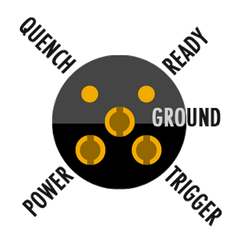 If attempting to install an Ikelite plug, we use the following color conventions:Look at the Ikelite sync cord plug connector which attaches to DS strobes and TTL housings, with pins on the top as shown at right. Connecting GROUND to TRIGGER should fire the strobe.
If attempting to install an Ikelite plug, we use the following color conventions:Look at the Ikelite sync cord plug connector which attaches to DS strobes and TTL housings, with pins on the top as shown at right. Connecting GROUND to TRIGGER should fire the strobe.
- Red wire READY light
- Green wire QUENCH
- Black wire GROUND
- White wire TRIGGER
- Power for TTL Circuitry
Non-digital (non-DS) strobes will blink the ready light when GROUND and QUENCH are connected.
The colors listed above are provided only for reference in the assembly of an Ikelite bulkhead. Wire colors are not visible in fully assembled bulkheads as found in products.
If a sync cord is attached to the strobe, for example, the diagram indicates which pins on the other end of the cord can be connected with a paper clip to test the strobe functions. If continuity of a cord is being tested, the diagrams indicate the matching connector on the other end of the cord. You can use a multimeter to test continuity.
Please pay attention and exercise extreme caution when using these wiring diagrams to test fire your strobe. Shorting across the incorrect connectors can cause damage to your strobe. Equipment may be returned to us at any time without prior authorization for testing and repairs as necessary.
Nikonos N5 Sync Cord
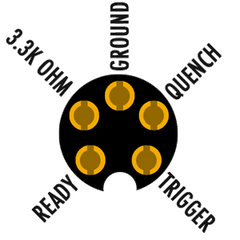 The wiring diagram shows a newer plug with 5 receptacles. This wiring is the same as older cords with three receptacles (in GROUND, TRIGGER AND READY positions) and two pins (in 3.3K OHM AND QUENCH positions).Look at the Nikonos sync cord plug connector, with the index groove on the bottom as shown at right. Connecting GROUND to TRIGGER should fire the strobe.
The wiring diagram shows a newer plug with 5 receptacles. This wiring is the same as older cords with three receptacles (in GROUND, TRIGGER AND READY positions) and two pins (in 3.3K OHM AND QUENCH positions).Look at the Nikonos sync cord plug connector, with the index groove on the bottom as shown at right. Connecting GROUND to TRIGGER should fire the strobe.
A 3.3K ohm resistor is installed inside of the plug, connecting the ground circuit to the pin identified as 3.3K ohm. This internal connection indicates to the camera that a TTL strobe is attached, and it provides proper operation with any brand of housing that has a Nikonos N5 bulkhead.
If a sync cord is attached to the strobe, for example, the diagram indicates which pins on the other end of the cord can be connected with a paper clip to test the strobe functions. If continuity of a cord is being tested, the diagrams indicate the matching connector on the other end of the cord. You can use a multimeter to test continuity.
Please pay attention and exercise extreme caution when using these wiring diagrams to test fire your strobe. Shorting across the incorrect connectors can cause damage to your strobe. Equipment may be returned to us at any time without prior authorization for testing and repairs as necessary.
Nikonos N5 Bulkhead
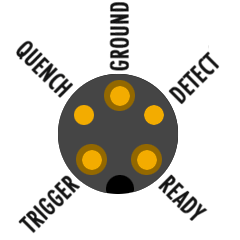 This diagram may be used to test continuity with a Nikon TTL hot shoe. For manual strobe operation, only GROUND and TRIGGER need to be wired.
This diagram may be used to test continuity with a Nikon TTL hot shoe. For manual strobe operation, only GROUND and TRIGGER need to be wired.
For TTL strobe operation, all five conductors need to be wired properly.
Check with your housing manufacturer for the most accurate information on how their bulkhead and hotshoe are wired. Incorrect wiring will prevent strobes from operating properly or providing TTL operation (using a compatible TTL converter).
Over the years various housing manufacturers have introduced a variety of Nikonos-style bulkheads with variations on the original contact design. Traditionally the QUENCH and DETECT pins will be spring loaded.
Nikon TTL Hot Shoe
 Look at the Ikelite sync cord plug connector which attaches to DS strobes and TTL housings, with pins on the top as shown at right. Connecting C (ground) to D (trigger) should fire the strobe.
Look at the Ikelite sync cord plug connector which attaches to DS strobes and TTL housings, with pins on the top as shown at right. Connecting C (ground) to D (trigger) should fire the strobe.
- Ikelite white wire TRIGGER = Nikon white wire
- Ikelite black wire GROUND = Nikon black wire
- Ikelite red wire READY light = Nikon blue wire
- Ikelite green wire QUENCH = Nikon red wire
- Ikelite 10K ohm resistor DETECT = Nikon yellow wire
The colors listed above are provided only for reference in the assembly of an Ikelite bulkhead. Wire colors are not visible in fully assembled bulkheads as found in products.











